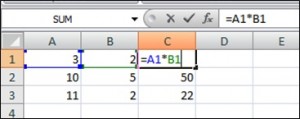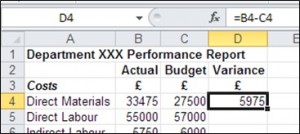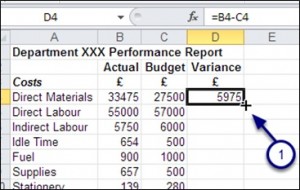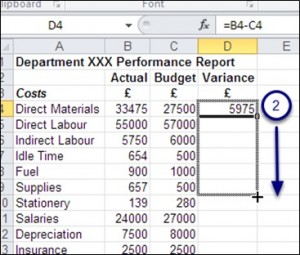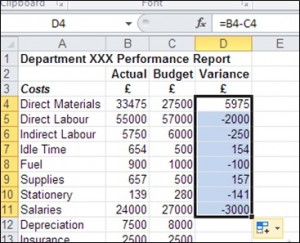MS Excel 2016: How to Copy Formulas in Excel


4 tips when using formulas
One of the basic functions of Excel that users love is its capability of utilizing and interpreting simple to complicated calculations using formula. If you are using the platform for a long time, this feature has served you for so long and you might be dealing with complex calculations and formulas already. However, for those who are using the program for the first time, you might be surprised with the fact that Excel can make your calculations in just a few clicks. Yes, it can! You will just have to learn few tricks to incite your learning and be able to make your own formulas based on your need.
In Excel, we use the term “formula” when we refer to the calculation in the spreadsheet. It can be as simple as adding or subtracting numbers or a more powerful one that includes more complex operations. A formula always starts with an equal sign (=), followed by numbers, mathematical operations or functions.
For instance, we want to multiply 2 by 3 then add 5, we are going to write it as:
=2*3+5
The answer in this example is 11.
If you want to know more about formulas and be able to write your own, just follow these four simple yet essential tips.
Tip number 1: Using cell reference in formulas
Cell reference refers to the location of the cell in the spreadsheet. It is the combination of the column (letter) and the row (number) header, like A1, B2, C3…
Instead of writing numbers in the formula and constantly changing it when the value you want to calculate changes, write the formula using the cell reference, as shown below.
So, instead of writing “=3*2”, write “=A1*B1”. In this case, there’s no need to edit the formula when you change the value you want to calculate.
Tip number 2: Creating formula
Basically, a formula follows this structure:
- An equal sign in the beginning
- First cell reference
- A mathematical symbol to denote the type of calculation
- Second cell reference
The Mathematical symbols used by Excel are:
- + for Addition
- – for Subtraction
- * for Multiplication
- / for Division
To create the formula
1. Click on the cell where you require the answer
2. Type the = sign
3. Click on the first cell involved in your calculation
4. Type the math symbol you are using
5. Click on the next cell involved in your calculation
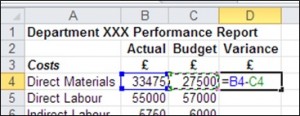
6. Repeat steps 4 & 5 (if you need to add more cells to your formula)
7. Press Enter
8. The cell will then show the result of the formula
[bookboon-book id=”345eb8b6-75c5-4887-a232-a563009f9309″ title=”This article is based on the following eBook” language=”en”]
Tip number 3: Making changes in the formula
There are two ways to change the formula
- In the Cell
- Double click on the cell that contains the formula
- Edit as you wish
- Press Enter
- In the Formula Bar
- Select the cell that contains the formula
- Click on the Formula Bar and make the changes
- Press Enter
Tip number 4: Copying formula using autofill
It would be tedious to manually write the same formula over and over again, that’s why Excel 2016 maintains this feature that will help you copy formula in just few steps – the Autofill.
1. Create your first formula
2. Select the cell
3. Hover your cursor over the bottom right-hand corner of the cell until you get the black cross (1)
4. Click and drag in the direction you want to Auto fill
5. The formula is copied down and the results appear in the cells
Following these four simple tips will make your computation a lot easier. You’ll save not only your energy but a lot of time as well.
Try it and enjoy working!
We have even more useful articles:
Get Faster Using the Flash Fill Feature
3 Simple Steps to Hide and Unhide Portions
How to Format Cells and Worksheets
Essential Facts About Worksheets and Workbooks and How to Utilize Them
Customize The ‘Quick Access Toolbar
How to Use Excel’s Basic Functions
[bookboon-recommendations id=”345eb8b6-75c5-4887-a232-a563009f9309″ title=”You might also find these books interesting:”]
